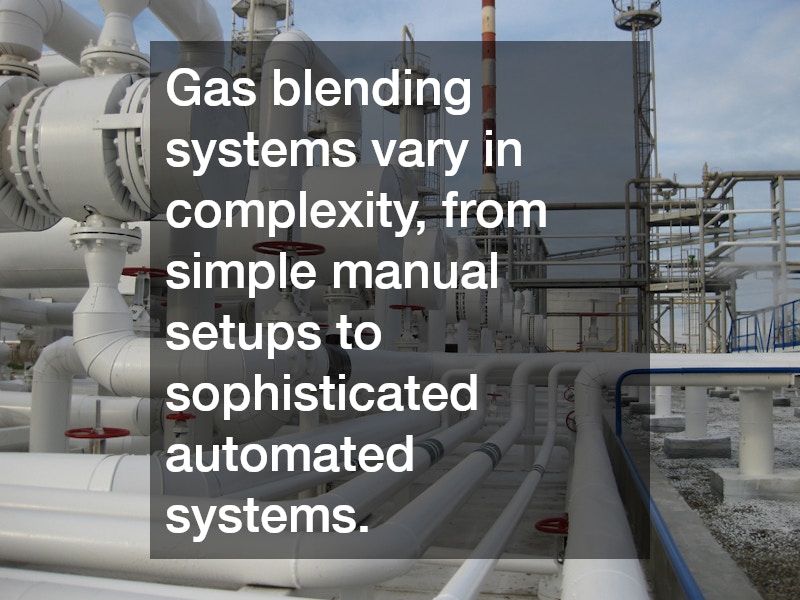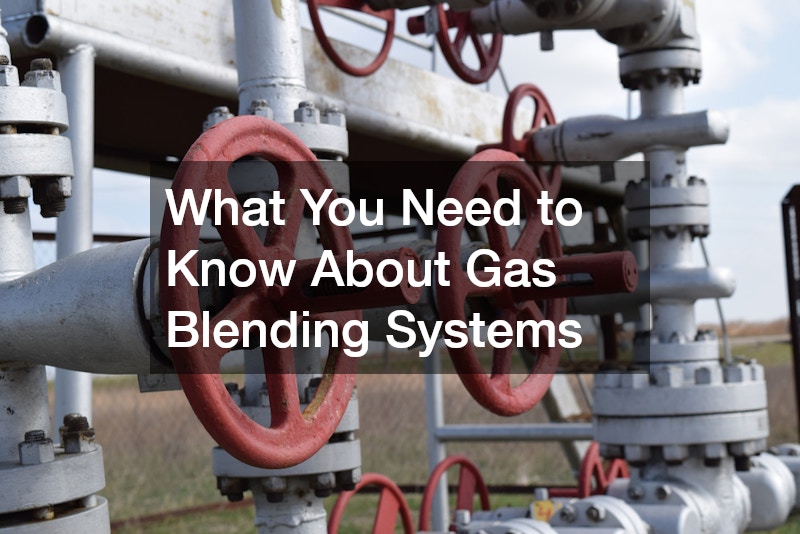Gas blending systems play a critical role in various industrial applications, ensuring precise control over the blending of gases. These systems are essential for industries such as welding, beverage manufacturing, and medical gas supply. By understanding the fundamentals of gas blending systems, one can appreciate the technology and precision involved in achieving optimal gas mixtures for specific applications.
The primary purpose of gas blending systems is to mix two or more gases in specific proportions to achieve desired characteristics. These systems are equipped with advanced technology that guarantees high accuracy and reliability in gas blending. With various types available, gas blending systems cater to diverse requirements, ensuring consistency in applications like ammonia refrigeration and metal fabrication.
Gas blending systems vary in complexity, from simple manual setups to sophisticated automated systems. They are designed to handle different types of gases, including oxygen, nitrogen, carbon dioxide, and argon, among others. Understanding their design and operational methodologies is crucial for industries that depend on precise gas mixtures.
The Working Mechanism of Gas Blending Systems
A gas blending system typically consists of a control panel, flow meters, and mixing manifolds. The control panel allows operators to set the desired gas composition, ensuring precise blending through automated processes. Flow meters are integral in these systems, measuring the flow rates of individual gases to maintain consistent mixtures.
Mixing manifolds are designed to facilitate the thorough blending of gases before distribution. These components ensure that gases are mixed homogeneously, maintaining the integrity and reliability of the blend. Such precision is vital for ensuring product quality and safety, especially in sectors like pharmaceuticals and petrochemicals.
Automation in gas blending systems enhances efficiency and reduces the potential for human error. Automated systems can continuously monitor and adjust gas flows, responding to any deviations in real-time. This capability is particularly important in applications that demand high-precision gas mixtures, such as in laboratory and research settings.
Applications of Gas Blending Systems in Various Industries
In the beverage industry, gas blending systems are used to carbonate drinks, combining carbon dioxide with other gases to achieve the desired fizz. The precision of these systems ensures consistent carbonation levels, vital for product quality and customer satisfaction. Additionally, well-blended gases can enhance the shelf life and taste of beverages.
Gas blending systems are crucial in the medical field, where they are used to supply precise mixes of gases for respiratory therapies. Accurate combinations of oxygen, nitrogen, and other therapeutic gases are necessary to meet specific medical requirements. This accuracy ensures patient safety and the efficacy of treatments provided in healthcare settings.
In the welding industry, specific gas blends are required for different types of welding processes. Gas blending systems allow welders to customize gas mixes to achieve optimal welding results, improving quality and efficiency. The flexibility and precision of these systems contribute to enhanced metallurgical properties and reduced welding defects.
Choosing the Right Gas Blending System
Selecting the appropriate gas blending system involves evaluating the specific requirements of the intended application. Factors such as the type of gases involved, desired blending accuracy, and system capacity must be considered. It’s crucial to assess the technological capabilities of a system to ensure it meets operational needs effectively.
The choice between manual and automated systems depends on the level of control and precision needed. Automated systems offer advantages in consistency and time-saving, essential for high-volume and critical applications. However, simpler manual systems may suffice for applications with less stringent blending requirements.
Considering the maintenance and operational costs is also important when choosing a gas blending system. An efficient system not only provides reliable performance but also minimizes downtime and maintenance efforts. Businesses should aim for systems that offer longevity and cost-effectiveness, ensuring a sound return on investment.
Benefits and Challenges of Gas Blending Systems
Gas blending systems offer numerous benefits, including improved process control, enhanced product quality, and greater safety. By providing precise control over gas composition, these systems help reduce waste and optimize resource utilization. They also contribute to consistent product characteristics, which is crucial for maintaining brand reputation in competitive industries.
Despite their advantages, gas blending systems can present challenges such as high initial investment costs and complexity in operation. The need for regular maintenance and calibration can also be resource-intensive, requiring skilled personnel and time. Additionally, any technical failures can lead to significant operational disruptions and financial losses.
To maximize the benefits while mitigating challenges, investing in advanced gas blending technologies is essential. This includes integrating monitoring and diagnostic tools that enable proactive maintenance and rapid response to potential issues. Proper training for operators can also enhance system operation, leading to increased efficiency and reduced operational risks.



